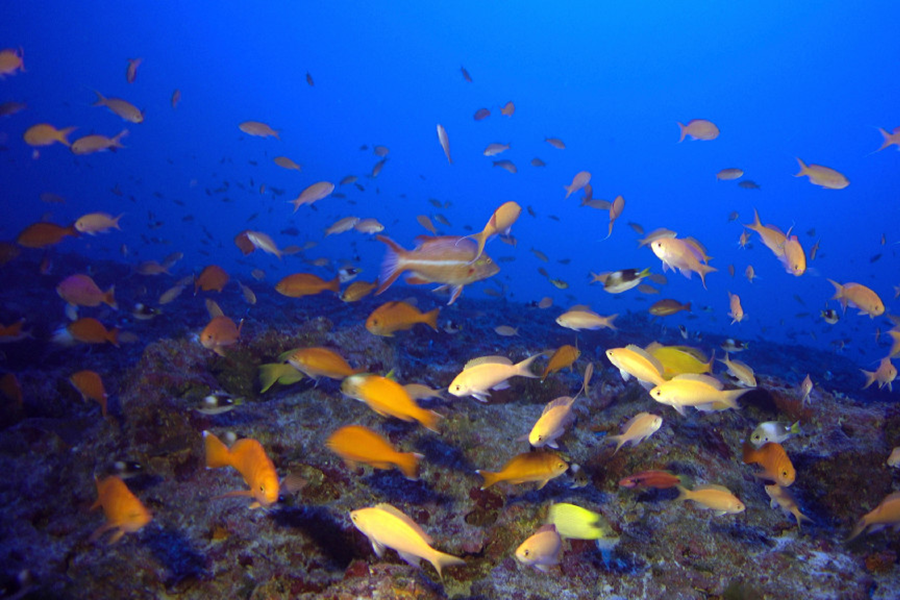Unexpected life thriving in Hawaii's 'twilight zone,' say scientists
Loading...
Underwater life is thriving in the coral reefs of Hawaii’s “twilight zone,” an area deep underwater that long remained a mystery to researchers, a new study found.
These newly discovered ecosystems some 100 to 500 feet below the surface play home to an abundant wildlife scene, hosting more than twice the amount of native Hawaiian fish species as the shallower waters surrounding the island chain, a paper published Tuesday in PeerJ revealed. While researchers have uncovered similar reefs in the Gulf of Mexico and near Okinawa, Japan, this discovery reveals the largest uninterrupted coral system yet to be found. Nestled in the channel off the island of Maui, these reefs are larger than three square miles.
“What is unique about this study is how vast and dense the coral cover is,” Richard Pyle, a Bishop Museum researcher and lead author of the publication, told the Associated Press. “Although there was a bit of a hint that corals could survive ... down at those depths, these reefs off Maui were far and away much more dramatic both because they were deeper and they had higher coral cover percentage.”
Before this study, which took 20 years and combined the efforts of 16 scientists from NOAA, the University of Hawaii, the Bishop Museum, and state agencies, little was known about deep sea reefs, as exploring beneath 100 feet becomes challenging, and at some depths, impossible, for divers. Much of what researchers know about coral reef ecosystems comes from those in shallow water, which provide only a limited view of underwater life.
“So the purpose of this study really was to characterize the other 80 percent of their depth range, and see what’s down there,” Randall Kosaki, deputy superintendent for the Papahānaumokuākea Marine National Monument at the National Oceanic and Atmospheric Administration, said.
Using submersibles, remotely operated vehicles, and technical diving, researchers found a high number of native, and unique, species. Nearly 100 percent of the fish living in the areas were found only in that region, marking the highest level of endemism in any marine ecosystem to date.
In addition to uncovering new species, the discoveries may also shed some light on how rising water temperatures would affect these hard-to-reach areas. While researchers did not find any coral bleaching at those depths, they still warn that increases in surface temperature heat could affect species living in deep waters.
"With coral reefs facing a myriad of threats, the finding of extensive reefs off Maui provides managers with a unique opportunity to ensure that future activities in the region – such as cable laying, dredging dump sites and deep sewer outfalls – do not irreparably damage these reefs," Kimberly Puglise, an oceanographer with NOAA's National Centers for Coastal Ocean Science, said in a release.
Researchers say that the very same human activities that affect shallow reefs, such as runoff and murky water, could have even harsher impacts on deep-sea reefs, which use the small amount of light that travels through water at those depths to conduct photosynthesis.
“They are incredibly unique, with the higher rates of endemism, they are incredibly rich,” Dr. Pyle said. “We should value them every bit as much as we value the shallow reefs.”
Information from the Associated Press was used in this report.








